Power flickers, and suddenly your critical systems are down. This chaos costs you time, money, and data. You need a reliable solution to ensure your operations never stop.
A UPS provides instant battery power during an outage and cleans up unstable grid power. Its main benefits are preventing data loss, protecting hardware from damage, and guaranteeing absolute operational continuity for critical equipment.
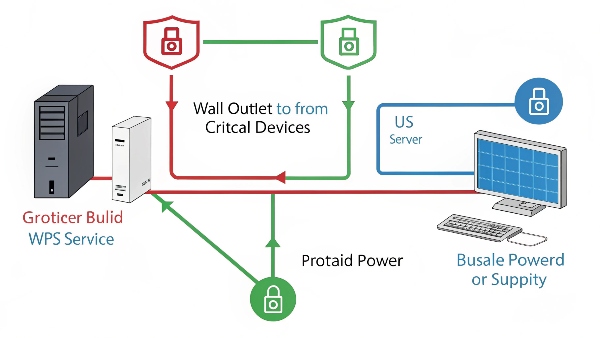
Transition Paragraph:
In my 10 years at Daopulse, I've helped countless procurement managers and system integrators understand a core truth about power protection. The most important insight is this: an uninterruptible power supply can get its power from many different paths. People usually just think of the wall outlet. But for critical infrastructure projects, knowing the other options is key. Understanding these power sources is the first step to designing a truly resilient system.
Where does a UPS get its power from?
You think a UPS just plugs into the wall. This limits your thinking and might cause you to design a system that isn't as robust as your project truly needs.
A UPS primarily uses AC mains power from the electrical grid. It uses this to power connected devices and charge its internal batteries. During a blackout, the battery becomes the immediate power source.
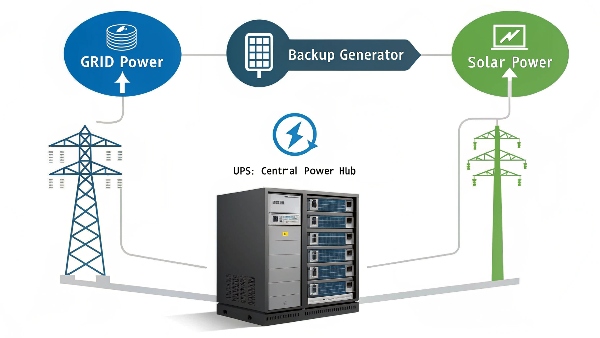
Dive deeper Paragraph:
As an OEM/ODM manufacturer, we design our UPS systems to be flexible. They have to work in a simple office or a complex industrial facility. The power source is a key part of that flexibility. The main source is almost always the AC power from the local utility grid. The UPS takes this power, cleans it, and sends it to your equipment. At the same time, it uses this power to keep its own internal batteries fully charged and ready. When the grid power fails, the system instantly switches to its secondary power source: the battery. But for a system integrator planning a large project, the options don't stop there. Our UPS systems can be integrated into more complex power chains. This is a critical feature for our clients in data centers and hospitals.
Advanced Power Sources for UPS Systems
| Power Source | How It Works | Best Use Case |
|---|---|---|
| Generator | The UPS is powered by a generator during long outages, after the battery has taken over. | Facilities needing hours or days of backup power. |
| BESS / Solar Array | The UPS is fed by a larger Battery Energy Storage System, which may be charged by solar. | Green energy projects or off-grid applications. |
| Dual-Bus System | The UPS can draw from two independent grid power sources for ultimate redundancy. | Tier IV data centers where no downtime is acceptable. |
This ability to accept power from different paths makes the UPS a central component in any serious power continuity plan.
How can you add a backup battery to a power supply?
Your server power supply has no built-in backup. A small power interruption can cause a system crash and corrupt important files. You need a way to add battery protection.
You don't add a battery directly to a device's power supply. Instead, you connect the entire device to a UPS. The UPS is a complete, integrated system containing the battery, charger, and inverter.
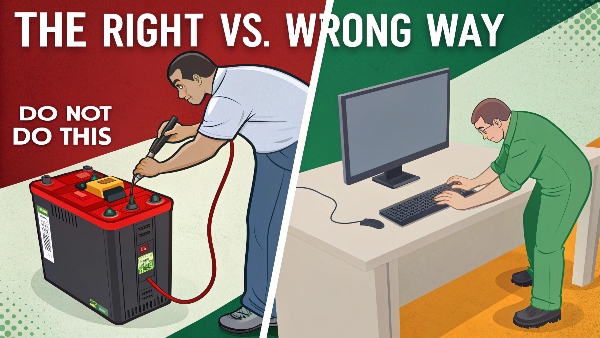
Dive deeper Paragraph:
This is a question I hear from people who are new to power protection. It comes from a logical place, but it's based on a misunderstanding of how electronics work. A server's internal power supply is designed to accept a very specific input: clean AC power, usually at 120V or 230V. A battery provides raw DC power at a different voltage. Connecting them directly would destroy the power supply. A UPS is the essential middleman that makes this work. It contains three key parts. First, the rectifier1 takes AC power from the wall and converts it to DC power to charge the battery. Second, the battery stores that DC power. Third, the inverter2 takes the DC power from the battery and converts it back into perfect AC power for your equipment. This entire process happens inside the UPS. So, you aren't just "adding a battery." You are adding a complete power management system. For procurement managers, a key feature to look for is expandability. Many of our UPS models allow for External Battery Modules3 (EBMs) to be connected. This lets you easily extend the runtime without replacing the entire UPS unit.
What is the function of a UPS in a power plant?
It seems strange that a place that generates power would need its own backup power. This makes some people think it's unnecessary, but a power plant failure can be a regional disaster.
In a power plant, a UPS provides instant, uninterruptible power to its own critical control and safety systems. It ensures the plant can be monitored and shut down safely, even if its main generators fail.
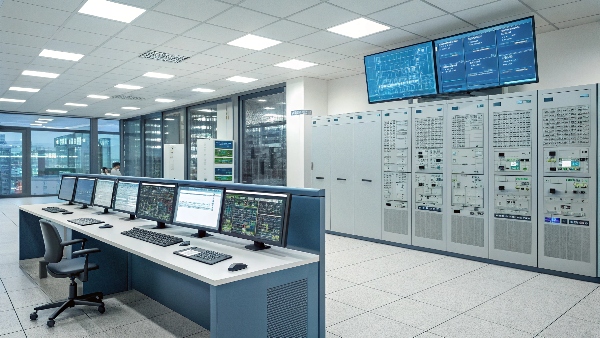
Dive deeper Paragraph:
A power plant is a massive, complex machine. While it generates huge amounts of power, it also consumes a small amount of "station power" to run itself. If a major fault occurs, this station power can be lost. This is where the UPS becomes absolutely critical. It's not there to run the turbines; it's there to run the plant's brain and nervous system during a crisis. At my company, we've provided solutions for these types of critical infrastructure projects. We know that these UPS systems must be extremely reliable and certified to the highest standards. They don't need to power everything, but they must power the most essential loads.
Key Systems Protected by a UPS in a Power Plant
| System | Function | Why UPS is Essential |
|---|---|---|
| Distributed Control System (DCS) | The main control room computers. | Allows operators to monitor and control the shutdown process. |
| Emergency Shutdown Systems | Automated safety systems that prevent disaster. | Must function instantly, regardless of grid status. |
| Critical Communications | Radios and phones for coordinating with the grid. | Essential for managing a regional blackout or emergency. |
| Emergency Lighting | Lights key areas for safe evacuation/operation. | Safety requirement for personnel during a plant blackout. |
The UPS in a power plant is the ultimate safety net, ensuring a catastrophic failure doesn't become even worse.
What are the common applications of Online UPS systems?
You know you need a UPS, but there are different types. Choosing a cheaper model for a critical application is a huge risk that can lead to the very failure you're trying to prevent.
Online UPS systems are for the most critical applications. This includes data centers, hospital life-support machines, banking transaction servers, and sensitive lab equipment where even a millisecond of transfer time is unacceptable.
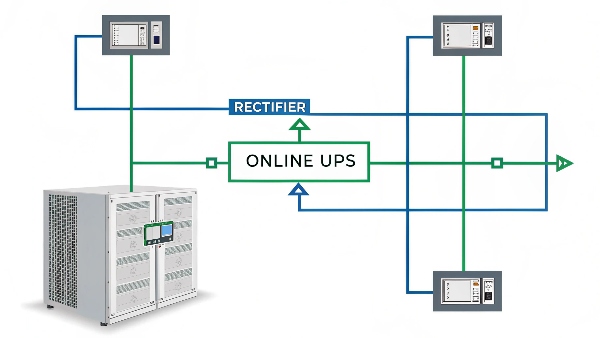
Dive deeper Paragraph:
An Online UPS, also known as a double-conversion UPS, is the best protection money can buy. It's the core of our high-end product line. Unlike simpler models, an Online UPS completely isolates your equipment from the grid. It constantly converts incoming AC power to DC, and then converts it back to perfectly clean AC power. Your equipment is always running off the inverter's perfect power, with the battery ready to take over with zero transfer time. This is why it's the only choice for truly critical loads. I always advise clients like Mr. Li, a procurement manager for hospital infrastructure, that Online UPS systems are non-negotiable for certain areas. A less-perfect power signal from a simpler UPS could cause an MRI machine to produce a flawed scan or a life-support system to reboot. The cost of failure is just too high. The same logic applies to a data center, where a single server reboot can corrupt a database, or a bank, where a lost transaction can cost thousands. The investment in an Online UPS is an investment in eliminating risk.
Conclusion
A UPS is a flexible system that protects critical equipment by providing clean, instant power from various sources. It is an essential component for ensuring reliability in any modern, critical operation.
-
Understanding the role of a rectifier is crucial for grasping how UPS systems convert power effectively. Explore this link for detailed insights. ↩
-
Learning about inverters will enhance your knowledge of power management in UPS systems. Check this resource for a comprehensive explanation. ↩
-
Discover how External Battery Modules can extend UPS runtime and improve efficiency. This link provides valuable information on their benefits. ↩

